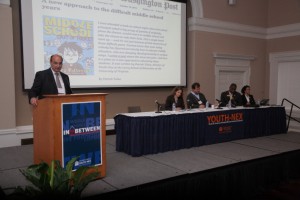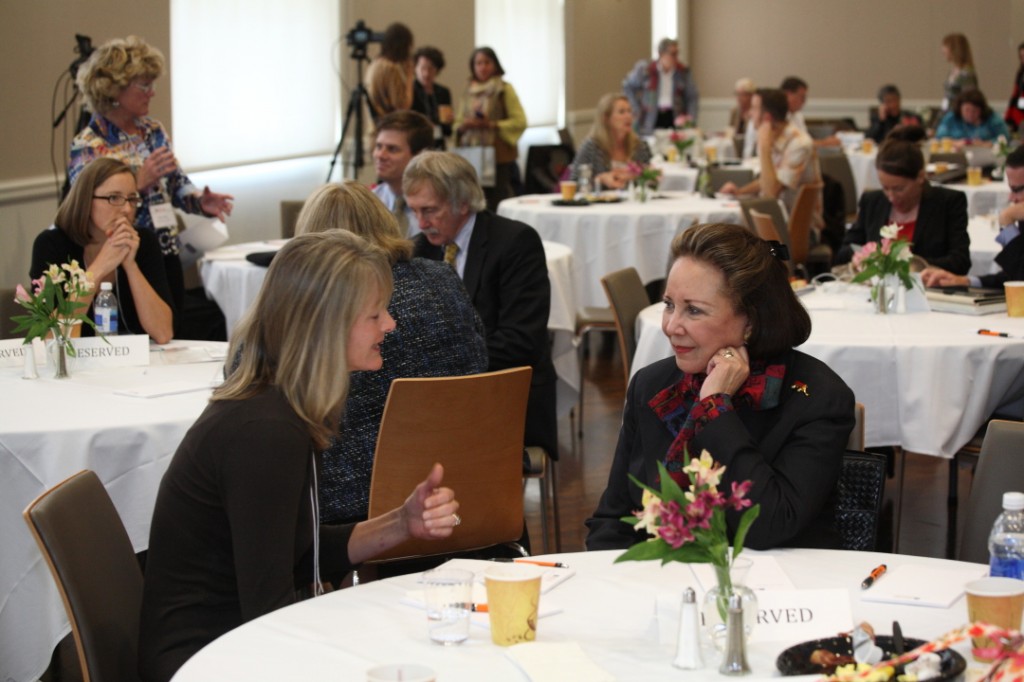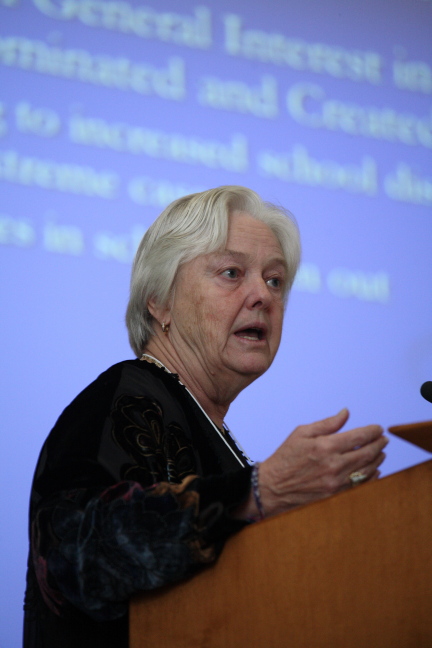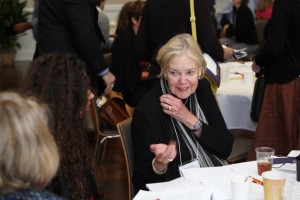Welcome to the Youth-Nex blog. Let’s continue the conversation started at the Youth-Nex middle school conference. Simply reply to posts here or email edaniels@virginia.edu to contribute your own post. You can also subscribe at the top right of this post.
As they accumulate, related posts will be found “under one roof” so to speak, under Middle School Conference 2012.
The first entry is by Deb Zehner, Management Consultant (with a specialty in social network analysis), NetVision LLC. Deb works closely with U.Va. business professor Rob Cross. Their application of social network analysis has traditionally been in the business sector but they are transitioning to the educational sector as well. More on the business application of social networking can be found here. Comments from her 13-year old daughter follow her post.
Youth-Nex’s In Between Conference, held Oct. 18-19, surpassed my expectations. I attended for two reasons. First, to explore possible applications of social networking to benefit middle school students by better understanding what adolescents need and how the schools are serving those needs. Second, for practical ideas of how I could get involved in a hands-on way myself. A nice side benefit was that I gained knowledge helpful to better understanding my own 13 year old daughter and her friends (her thoughts are below). The conference blended the worlds of research, application, and policy, allowing for discussion with the speakers and other attendees. There were many interesting findings, but some of the most striking ones for me follow.
The more transitions, the more the students suffer. As J. Eccles pointed out, transitions are not inevitably bad—it depends on how they are handled. The transition to middle school is tough on both students and parents. N. Hill’s metaphor to the similarities of a relay race was salient, where the winning, or in this case, success of the student, depends on the quality of the hand-offs. If the research in the U.S. showing the effects of school structure (i.e. how grades are combined) plays out similarly to the Finnish and UK research, which showed a decrease in the self-esteem of girls as they go through the middle school transition (versus a school structure of K-8, 9-12) then it is clear that we need to change the grade splits or put processes in place to ease, or even take advantage of the transitions.
Parents without a college degree instill aspirations in their children (as do college-educated parents) but are unable to prepare their children adequately to achieve those aspirations. This was eye-opening. How can we help prepare these students (and parents) to fulfill their dreams by providing knowledge of different education pathways, of what classes are required, of how to set short and long term goals?

Patrick Tolan speaks about the opportunity of adolescence. The Washington Post Op Ed he wrote on the topic appeared the same day and is shown in the slide behind him.
Teens want their parents to be involved! But not where they can be seen. They want their parents to help them decide what classes to take, to discuss future plans, to help with their homework and to talk with their teachers when necessary …. but not to walk them into school, to go on field trips, or to look through their bookbag. P. Tolan cited research about the need for parents to spoon-feed reality to their children as they grow, giving them increasingly more significant opportunities for independence and responsibility. Not only is this aligned with what teens’ want, but N. Hill’s research showed that parental involvement had 10x affect on students success compared to 2x for school involvement.
Almost one out of every three students drops out of high school. This can be predicted with 75% accuracy before high school. Not only is this an economic problem ($192B loss of revenue, according to A. Powell), but even more important, a societal problem. Presenters spoke to the several things these kids need to keep them in school (i.e. mattering, responsibility, identity), but the one that was highlighted again and again was a consistent, caring relationship with an adult (someone has to be crazy about the kid).
The out-of-school programs available to students are diverse, silo’d, and hard to navigate (and often not available during the summer). This presents a problem to parents who are trying to figure out the best options for their children. B. Milliken described the role of a router, a person within the school, who helps to organize services for students. Communities in Schools is working to establish this position more commonly. M. McLaughlin described a unique database which combined information from schools, afterschool programs, health services, etc., to help show a unified picture of a young person. This research is having a significant effect on how these diverse organizations work together for the good of a student.
These are only a few of the many interesting ideas presented. We have much work ahead of us!
Rachel’s Response (Deb’s 13-year-old daughter)
Transitions are very hard on both parents and kids, but more so on kids during middle school and high school as they are more likely to get teased or feel alone during this time. Kids often aren’t very nice to each other. It’s really important to have good and trustworthy friends that you can talk to since most kids are unlikely to tell their parents about situations that involve teasing or bullying.
It’s really important for parents to stay very involved and active in the kids’ lives through this time. For me, I always want to know what is next and to have a plan, and I imagine it’s the same for most teenagers. It is probably important for them to talk about what they need/should do in the future so they are then they will be able to make their own decisions, and be informed of what that means. Parents should also help their children to feel strong and confident. Without parents there and talking to their kids, the kids are much more likely to get involved in things that they should not be.
I think of media as something to enjoy and as a way to talk to my friends. We often use Skype to work on a project or discuss schoolwork and also to say hi. Other than this, I don’t see media as a way to help me learn, at least not the online teaching I’ve seen so far.
Reply to Deb’s post or email edaniels@virginia.edu to contribute your own post. We want to hear from you.




